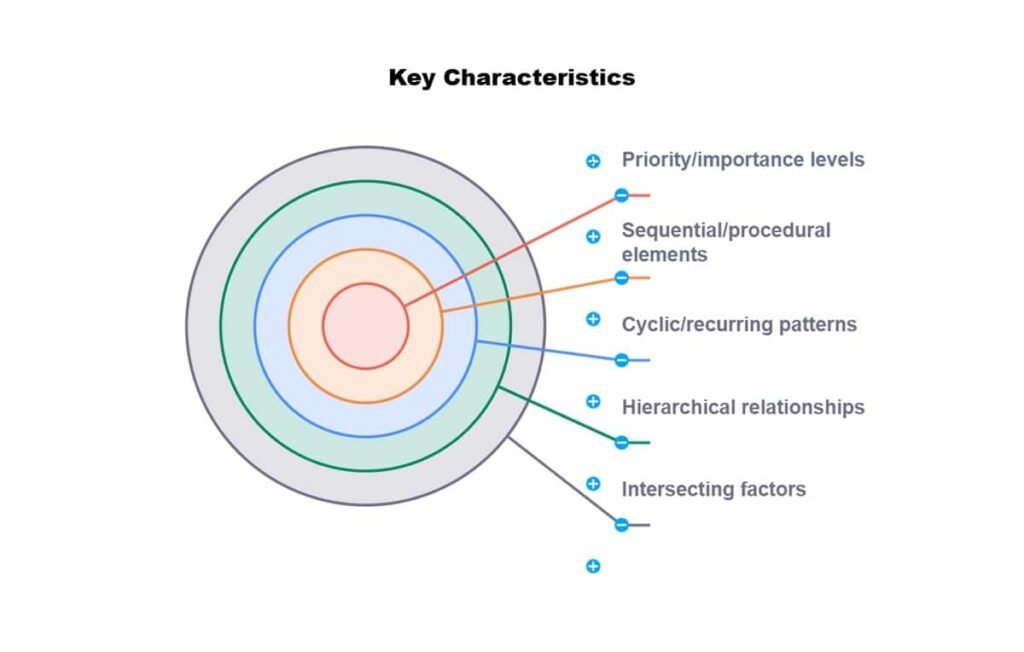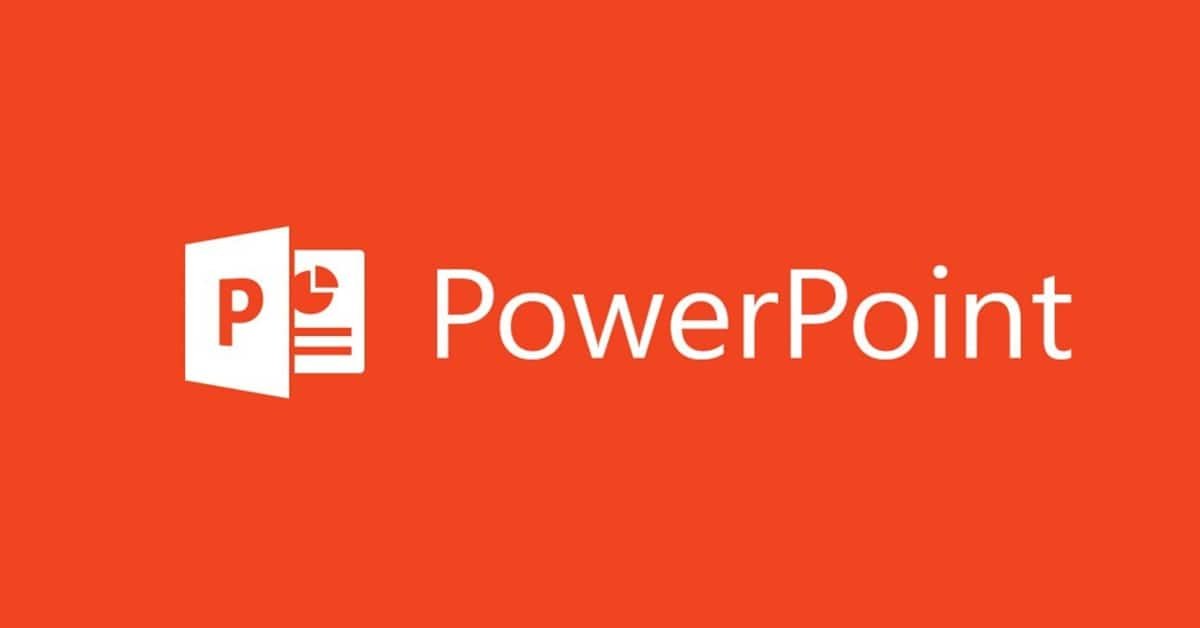Decoding PowerPoint: A Comprehensive Guide to Microsoft’s Presentation Powerhouse
Microsoft PowerPoint. The name evokes images of boardrooms, classrooms, and countless hours spent crafting (and sometimes enduring) presentations. While often maligned for its overuse and potential for dullness, PowerPoint remains a dominant force in the world of communication, a tool that, when wielded correctly, can be incredibly powerful.
This comprehensive guide aims to demystify PowerPoint, exploring everything from its basic functionalities to advanced techniques, helping you move beyond the default templates and create compelling presentations that truly resonate with your audience.
A Brief History: From Pre-Sense to Presentation Dominance
Before diving into the features, a little history is in order. PowerPoint was originally created by Robert Gaskins and Dennis Austin at Forethought, Inc. in 1987. Initially named “Presenter,” it was designed for the Apple Macintosh and allowed users to create overhead transparencies – a revolutionary concept at the time. Microsoft acquired Forethought later that same year and rebranded the software as PowerPoint, quickly establishing it as the industry standard.
Over the decades, PowerPoint has evolved dramatically, transitioning from a simple slide-making tool to a sophisticated presentation platform packed with features for design, animation, collaboration, and delivery.
The Core Functionality: Building Blocks of Your Presentation
At its heart, PowerPoint is built around the concept of the slide. Each slide is a canvas where you combine text, images, videos, charts, and other elements to convey your message. Let’s break down the key components:
- The Interface: Familiarize yourself with the Ribbon interface, which organizes commands into tabs like Home, Insert, Design, Transitions, Animations, Slide Show, Review, and View. The Backstage view (accessed via the File tab) manages file operations like saving, printing, and sharing.
- Creating a New Presentation: You can start from scratch with a blank presentation or choose from a wide array of pre-designed templates. Templates offer a quick way to establish a visual style and layout but remember to customize them to match your brand and content.
- Adding Slides: Adding new slides is straightforward. Choose a layout that best suits the content you intend to display. PowerPoint offers various layouts, including Title Slide, Title and Content, Section Header, Two Content, Comparison, and Blank.
- Working with Text: Text boxes are the primary containers for text on your slides. You can adjust font, size, color, and alignment and apply various effects. Remember the cardinal rule of PowerPoint: less is more. Avoid overwhelming your audience with dense blocks of text. Use bullet points, short phrases, and keywords to highlight key takeaways.
- Inserting Visuals: PowerPoint allows you to insert a wide variety of visuals. Images: Images can be inserted from your computer, online sources (Bing image search, OneDrive), or stock image libraries.
- Shapes: Use shapes to create diagrams, callouts, and visual accents. PowerPoint offers a wide range of pre-defined shapes, including rectangles, circles, arrows, and more.
- Icons: Icons are a great way to visually represent concepts and add visual interest without overwhelming your slides. PowerPoint provides a built-in icon library.
- SmartArt Graphics: SmartArt provides pre-designed, customizable graphics for illustrating processes, hierarchies, relationships, and more.
- Charts: Data visualization is crucial for conveying complex information. PowerPoint supports various chart types, including column, bar, line, pie, and scatter plots.
- Videos and Audio: Embed videos and audio clips to add multimedia elements to your presentation.
- Slide Layouts and Themes:Layouts: These pre-defined arrangements of placeholders dictate the position of text, images, and other objects on your slide.
- Themes: Themes provide a unified design across your entire presentation, controlling the color scheme, fonts, and background styles. You can choose from pre-defined themes or customize them to create a unique look.
- Slide Master: The Slide Master is a powerful tool that allows you to modify the layout of all slides based on a particular layout or theme. Changes made in the Slide Master will be reflected throughout your presentation. This is especially useful for adding logos, setting consistent fonts, and controlling the overall design.
Animation and Transitions: Adding Visual Polish (But Use Sparingly!)
Animation and transitions can add visual flair to your presentation, but it’s crucial to use them judiciously. Overuse can distract your audience and make your presentation appear amateurish.
- Transitions: Transitions are applied between slides, controlling how one slide moves off the screen, and the next slide appears. Common transitions include Fade, Wipe, Push, and Reveal. Choose transitions that are subtle and consistent throughout your presentation.
- Animations: Animations are applied to individual objects on a slide, controlling how they enter, exit, or move within the slide. Animations can be used to reveal content gradually, emphasize key points, or create visual interest. There are four categories of animation effects:Entrance: How an object appears on the slide.
- Emphasis: How an object is highlighted while already on the slide.
- Exit: How an object disappears from the slide.
- Motion Paths: How an object moves along a predefined path on the slide.
Presentation Delivery: Engaging Your Audience
Crafting a visually appealing presentation is only half the battle. Effective delivery is just as important.
-
- Slide Show View: PowerPoint offers several slide show view options. Presenter View: This view displays your slides on the main screen while providing you with notes, a timer, and other helpful information on a separate screen (typically your laptop).
- Slide Show (Full Screen): Displays the presentation on the full screen without any presenter notes or tools.
- Reading View: This allows you to navigate through the presentation in a window view.
- Presenter View Tips: Use Notes Effectively: Write concise notes to remind yourself of key points, statistics, or anecdotes you want to share.
- Monitor Your Time: Keep track of your progress and adjust your pacing accordingly.
- Engage with Your Audience: Maintain eye contact, use a conversational tone, and encourage questions.
- Remote Control and Laser Pointer: Consider using a remote control to advance slides and a laser pointer to highlight key areas on the screen.
- Rehearsal Mode: Use the Rehearsal Mode feature to practice your presentation and refine your timing.
Collaboration and Sharing: Working Together on Presentations
PowerPoint facilitates collaboration through cloud-based sharing and co-authoring features.
- OneDrive Integration: Save your presentations to OneDrive to enable real-time co-authoring. Multiple users can work on the same presentation simultaneously.
- Sharing Options: Share your presentation with others via email or by creating a shareable link. You can control the level of access granted to collaborators (view only, edit).
- Comments and Feedback: Use the comments feature to provide feedback on specific slides or sections of the presentation.
Beyond the Basics: Advanced PowerPoint Techniques
Once you’ve mastered the fundamentals, you can explore more advanced techniques to elevate your presentations:
- Creating Interactive Presentations: Use hyperlinks and action buttons to create non-linear presentations that allow viewers to navigate through the content based on their interests.
- Embedding External Content: Embed websites, Excel spreadsheets, and other types of content directly into your presentation.
- Customizing Animations: Fine-tune animation effects to create sophisticated visual sequences.
- Recording Presentations: Record your narration and screen activity to create self-paced presentations or training materials.
- PowerPoint Designer: Leverage the AI-powered PowerPoint Designer to get design suggestions and automatically improve the visual appeal of your slides.
- Morph Transition: This powerful transition allows you to seamlessly animate objects between slides, creating visually stunning effects.
- Add-ins and Plugins: Extend the functionality of PowerPoint with add-ins and plugins that provide specialized features for tasks like data analysis, mind mapping, and more.
Common PowerPoint Pitfalls to Avoid
While PowerPoint is a powerful tool, it’s easy to fall into common traps that can undermine your message:
- Death by PowerPoint: Overloading slides with text and complex graphics.
- Reading Directly from Slides: Using your slides as a script rather than a visual aid.
- Excessive Use of Animation and Transitions: Distracting the audience with unnecessary visual effects.
- Inconsistent Design: Using different fonts, colors, and layouts throughout the presentation.
- Typos and Grammatical Errors: Neglecting to proofread your slides carefully.
- Poor Visuals: Using low-resolution images or cluttered charts.
- Forgetting Your Audience: Failing to tailor your presentation to the interests and knowledge level of your audience.
PowerPoint Alternatives:
While PowerPoint remains the dominant presentation software, several compelling alternatives exist, each with its own strengths:
- Google Slides: A free, web-based presentation tool that offers excellent collaboration features.
- Keynote (Apple): A visually stunning presentation software known for its elegant design and intuitive interface.
- Prezi: A non-linear presentation tool that uses a zooming interface to create dynamic and engaging presentations.
- Canva: A versatile design platform that includes presentation creation tools with a focus on visual appeal and ease of use.
- LibreOffice Impress: A free and open-source presentation software that is part of the LibreOffice suite.
Your Ultimate Guide to Microsoft PowerPoint: FAQs and Everything You Need to Know
Microsoft PowerPoint is a ubiquitous presentation software used by students, professionals, and educators alike. Its versatility and user-friendly interface make it a go-to tool for conveying information in a visually engaging manner. For instance, a small business owner once transformed the trajectory of their company by using PowerPoint to deliver a visually stunning pitch to investors, securing crucial funding. However, with its vast array of features and functionalities, even seasoned users can sometimes find themselves scratching their heads. This comprehensive FAQ aims to address common questions and clarify various aspects of PowerPoint, helping you unlock its full potential and create impactful presentations.
I. Getting Started with PowerPoint
1. What is Microsoft PowerPoint and what is it used for?
Microsoft PowerPoint is a presentation software that allows users to create slideshows composed of text, images, videos, animations, and other multimedia elements. Its seamless integration of multimedia features distinguishes it from competitors by enabling users to create dynamic and engaging presentations. For instance, PowerPoint not only supports a wide variety of file types but also provides sophisticated animation effects and transitions, which allow presenters to convey complex information more effectively. The ability to embed interactive elements further enhances its versatility, making it an indispensable tool for professional communication and education.
- Presentations: Delivering information, ideas, or proposals to an audience in a structured and visually appealing way.
- Training: Creating educational materials and training modules for employees, students, or other groups.
- Reporting: Summarizing data and findings in a clear and concise manner.
- Marketing: Developing marketing presentations and promotional materials to showcase products or services.
- Storytelling: Visually narrating stories and engaging audiences with multimedia elements.
2. How do I open PowerPoint?
The process varies slightly depending on your operating system:
- Windows: Click the Windows Start button, type “PowerPoint” in the search bar, and click the PowerPoint icon. Alternatively, navigate to the Microsoft Office folder in the Start menu and find PowerPoint.
- macOS: Open Finder, navigate to the “Applications” folder, and double-click the PowerPoint icon. You can also use Spotlight search (Command + Space) to find and open PowerPoint.
3. How do I create a new presentation?
Once PowerPoint is open:
- From Scratch: Click “Blank Presentation” to start with a clean slate.
- Using a Template: Browse the available templates in the “New” tab. You can search for specific template categories like “Business,” “Education,” or “Infographic.” Select a template and click “Create.”
- From an Existing Presentation: Open an existing PowerPoint file and save it as a new file (File > Save As). This allows you to use the existing presentation as a template.
4. What are the different views in PowerPoint?
PowerPoint offers several views optimized for different tasks:
- Normal View (Default): The primary view for creating and editing slides. It displays the slide you are working on in the Slide pane, a list of slides in the Slides pane, and the Notes pane for adding speaker notes.
- Slide Sorter View: Displays thumbnails of all slides in the presentation, allowing you to easily rearrange them and get an overview of the entire presentation.
- Notes Page View: Displays each slide with ample space for adding speaker notes below it.
- Reading View: Displays the presentation in a window, allowing you to navigate through slides without distractions.
- Slide Show View: Displays the presentation full-screen, simulating the presentation experience for the audience.
- Outline View: Displays the presentation content as an outline, focusing on the text and hierarchy of the slides.
You can switch between views using the buttons at the bottom right corner of the PowerPoint window or through the “View” tab in the ribbon.
II. Working with Slides and Content
5. How do I add a new slide?
There are several ways to add a new slide:
- Home Tab: Click the “New Slide” button in the “Slides” group on the “Home” tab. Choose a layout from the dropdown menu.
- Right-Click: Right-click on a slide in the Slides pane and select “New Slide.”
- Keyboard Shortcut: Press Ctrl+M (Windows) or Command+Shift+N (macOS).
6. How do I change the layout of a slide?
To change the layout of a slide:
- Select Slide: Select the slide you want to modify in the Slides pane.
- Home Tab: Click the “Layout” button in the “Slides” group on the “Home” tab.
- Choose Layout: Select a new layout from the dropdown menu.
7. How do I add text to a slide?
PowerPoint provides placeholders (text boxes) on slides for adding text. If a slide doesn’t have a placeholder, you can insert a text box:
- Insert Tab: Click the “Text Box” button in the “Text” group on the “Insert” tab.
- Draw Text Box: Click and drag on the slide to create a text box.
- Type Text: Click inside the text box and begin typing.
8. How do I insert images, videos, and audio into a slide?
- Insert Tab: Go to the “Insert” tab.
- Images: Click the “Pictures” button in the “Images” group. Choose “This Device” to insert an image from your computer or “Online Pictures” to search for images online.
- Videos: Click the “Video” button in the “Media” group. Choose “This Device” to insert a video from your computer or “Online Videos” to embed a video from platforms like YouTube.
- Audio: Click the “Audio” button in the “Media” group. Choose “Audio on My PC” to insert an audio file from your computer or “Record Audio” to record your own audio.
9. How do I format text in PowerPoint?
PowerPoint offers extensive text formatting options:
- Select Text: Select the text you want to format.
- Home Tab: Use the formatting options in the “Font” group on the “Home” tab to change the font, font size, font color, text alignment, bold, italics, underline, and other text attributes.
- Mini Toolbar: A mini toolbar appears when you select text, providing quick access to common formatting options.
10. How do I add shapes and SmartArt graphics?
- Insert Tab: Go to the “Insert” tab.
- Shapes: Click the “Shapes” button in the “Illustrations” group. Choose a shape from the dropdown menu and click and drag on the slide to create it.
- SmartArt: Click the “SmartArt” button in the “Illustrations” group. Choose a SmartArt graphic from the gallery and click “OK.” You can then add text and customize the SmartArt graphic.
III. Animations, Transitions, and Multimedia
11. What are animations and how do I add them?
Animations add movement to individual elements within a slide, such as text, images, or shapes.
- Select Element: Select the element you want to animate.
- Animations Tab: Go to the “Animations” tab.
- Choose Animation: Choose an animation effect from the “Animations” group. You can preview the animation by clicking the “Preview” button.
- Animation Pane: Use the “Animation Pane” to manage and customize animations, including their timing, direction, and triggers.
12. What are transitions and how do I add them?
Transitions are visual effects that occur when moving from one slide to the next.
- Select Slide: Select the slide to which you want to apply the transition. The transition will occur when moving to this slide.
- Transitions Tab: Go to the “Transitions” tab.
- Choose Transition: Choose a transition effect from the “Transitions to This Slide” group. You can preview the transition by clicking the “Preview” button.
- Effect Options: Use the “Effect Options” button to customize the transition.
- Sound and Duration: Adjust the transition sound and duration in the “Timing” group.
- Apply to All: Click the “Apply to All” button to apply the same transition to all slides in the presentation.
13. How do I control the timing of animations and transitions?
- Animations Timing: In the “Animation Pane,” you can adjust the “Start,” “Duration,” and “Delay” settings for each animation. “Start” determines when the animation begins (on click, with previous, or after previous).
- Transitions Timing: In the “Transitions” tab, you can adjust the “Duration” of the transition and set the “Advance Slide” options (on mouse click or automatically after a certain time).
14. How do I add hyperlinks to my presentation?
Hyperlinks allow you to jump to other slides, websites, or files from within your presentation.
- Select Text or Object: Select the text or object you want to use as a hyperlink.
- Insert Tab: Click the “Link” button in the “Links” group on the “Insert” tab.
- Insert Hyperlink Dialog Box:
- Existing File or Web Page: Enter the web address or browse to the file you want to link to.
- Place in This Document: Choose a slide in your presentation to link to.
- Create New Document: Create a new document and link to it.
- Email Address: Create an email message and link to it.
- Click OK: Click “OK” to create the hyperlink.
IV. Presenting and Saving Your Work
15. How do I start a slide show?
There are several ways to start a slide show:
- Slide Show Tab: Click the “From Beginning” button in the “Start Slide Show” group on the “Slide Show” tab.
- Status Bar: Click the “Slide Show” button at the bottom right corner of the PowerPoint window.
- Keyboard Shortcut: Press F5.
16. How do I navigate through a slide show?
- Arrow Keys: Use the left and right arrow keys to move forward and backward through the slides.
- Spacebar/Enter: Press the spacebar or enter key to advance to the next slide.
- Backspace: Press the backspace key to return to the previous slide.
- Number Key + Enter: Type the slide number and press enter to jump directly to that slide.
- Right-Click Menu: Right-click on the slide show to access a menu with navigation options.
17. How do I end a slide show?
- Escape Key: Press the Escape (Esc) key.
- Right-Click Menu: Right-click on the slide show and select “End Show.”
18. How do I use presenter view?
Presenter View displays the presentation on one screen (usually the projector) while showing the speaker notes, next slide, and a timer on your computer screen.
- Slide Show Tab: In the “Monitors” group on the “Slide Show” tab, ensure “Use Presenter View” is checked.
- Start Slide Show: Start the slide show as described above.
- Configure Monitors: If PowerPoint doesn’t automatically detect your monitors, you may need to configure them in your operating system’s display settings.
19. How do I add speaker notes?
Speaker notes provide cues and reminders for the presenter, helping to enhance presentation flow and boost confidence.
- Normal View: In Normal View, click in the “Notes” pane below the slide.
- Type Notes: Type your notes in the Notes pane.
- Notes Page View: You can also use Notes Page View (View > Notes Page) to see each slide with its corresponding notes.
20. What file formats can PowerPoint save in?
PowerPoint can save presentations in various file formats:
- PPTX: The default file format for PowerPoint presentations (PowerPoint 2007 and later).
- PPT: An older file format for PowerPoint presentations (PowerPoint 2003 and earlier).
- PPSX: PowerPoint Show (opens directly in slide show mode).
- PDF: Portable Document Format (for sharing and printing).
- Video (MP4, WMV): Allows you to save your presentation as a video file.
- Image (JPEG, PNG): Allows you to save individual slides as images.
21. How do I save my presentation?
- File Tab: Click the “File” tab.
- Save: Click “Save” to save the presentation if it has been saved before.
- Save As: Click “Save As” to save the presentation for the first time, save it with a different name, or save it in a different file format.
- Choose Location: Choose a location on your computer or in the cloud to save the file.
- Name File: Enter a name for the file.
- Choose File Format: Select a file format from the “Save as type” dropdown menu.
- Click Save: Click “Save” to save the presentation.
V. Advanced Features and Troubleshooting
22. How do I create custom themes?
Custom themes allow you to define the overall look and feel of your presentation, including colors, fonts, and effects.
- View Tab: Go to the “View” tab.
- Slide Master: Click the “Slide Master” button in the “Master Views” group.
- Customize: Customize the slide master (the largest slide thumbnail) and the slide layouts (the smaller thumbnails below the slide master). You can change the background also.

Conclusion: Mastering the Art of Presentation
PowerPoint is a versatile tool that can be used to create compelling and effective presentations. By understanding its core functionalities, exploring advanced techniques, and avoiding common pitfalls, you can harness its power to communicate your message effectively and engage your audience. Remember that PowerPoint is just a tool; the key to a successful presentation lies in the quality of your content, your delivery skills, and your ability to connect with your audience. So, practice your presentations, iterate on your designs, and strive to create presentations that are not only informative but also engaging and memorable. Good luck!


